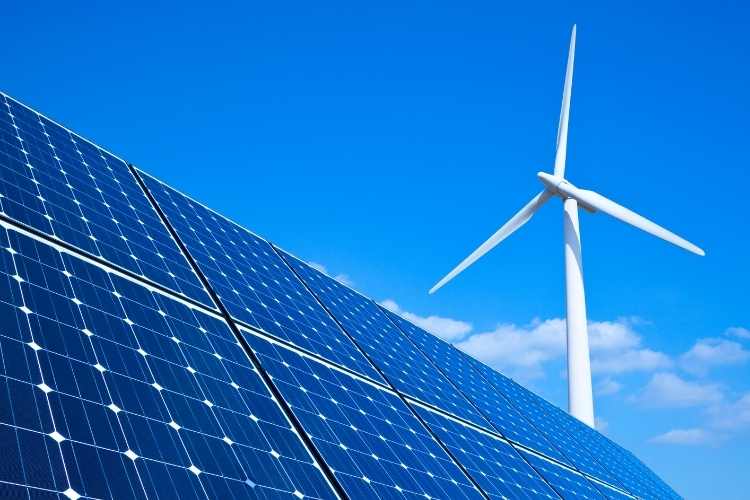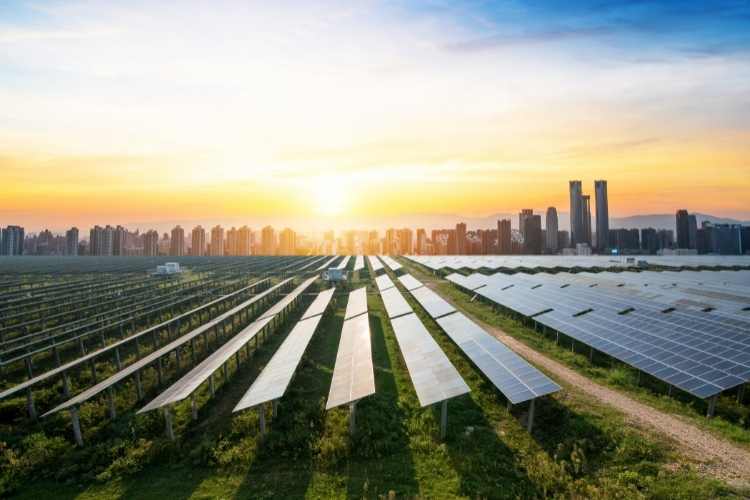
Renewable Energy Supply Chain
At these present times, the move from old ideals to an eco-friendlier approach for many sectors is at the forefront of the competitive market, even more so when creating change in today's electricity generation. The renewable energy sector is an ever-changing and prevalent part of our world. Continued technology development plays a massive role in how companies and consumers alike process energy and step towards a clean energy future and renewable energy supply chain.
What Is The Renewable Energy Sector?
The renewable energy sector is a segment of the energy industry that focuses on new and efficient renewable energy technologies. Renewable energy, also known as clean energy, is energy produced from natural sources or constantly renewed processes. Such sources are wind, sunlight, and flowing water, which are always constant, even if they depend on weather and availability.
Dirty energy vs. clean energy
The switch from dirty energy to renewable energies is the main driving force behind the popularity and engagement of the sector. It involves switching from energies produced from fossil fuels such as oil, coal, and gas to more natural powers like wind power, solar power, and natural gas.
Importance of renewable energies in Vietnam
The impact of renewable energy sources on businesses worldwide is incredibly advantageous, and many countries are looking for ways to implement renewables to ensure companies and their supply chains in a multitude of sectors can contribute to environmental impacts in a positive light.
Vietnam's increase in electricity demand has risen to 10% each year over the past 5 years in light of the economic growth, meaning new capacity for energy sources is a must when trying to keep up with recent developments. Due to this, Vietnam's recent sustainable development has said that the country's efforts to adopt a cleaner energy production are at an all-time high.
With the country's efforts to follow such plans, there has been an increase in 7.4 GW of rooftop solar energy, making 25-fold more installments than the year before. However, Vietnam’s largest renewable energy supplier comes from hydropower, contributing to around 40% of its national electricity capacity.
Renewable Energy Supply Chain- Challenges Faced
Worldwide
Despite renewable energy giving many positives to companies and consumers alike and positively impacting the environment and climate change, there are problems faced when it comes to the supply chain for renewable energy.
Special equipment
One issue faced by supply chain management is the demand and need for special equipment to create such renewable energy sources, challenged with supply chain strain. Due to the pandemic and lack of labor in these times, supply chains have been faced with many delays, meaning unique resources needed to make things such as wind energy have been met with significant issues. Wind turbines requiring various components to provide electric power have been in great demand recently, and specialized machinery to move such large objects. Unfortunately, supply chains are met with major port congestion due to a lack of labour and a major inventory backlog. This has a profound impact on the renewable energy world as supply chains cannot keep up with the demand and congestion brought upon them, meaning sustainable manufacturing practices are left with little to no resources.
Unpredictability
Energy supply chains are also met with issues of unpredictability as raw materials are left scarce and the containers to move them, which undoubtedly has an impact on the world of renewable energy. Raw materials and resources needed to make and create infrastructure for energy sources such as wind, solar and hydro have all been in low supply and high demand. They are resulting in massive strain on the energy supply chain due to lack of labour to produce such supplies equalling limited availability.
As prices also rise for such materials as sectors begin to recover from the pandemic, containers are in a shortage, increasing costs in this area. Fewer shipping lines can provide such operations. This, in turn, is beginning to slow the efficiency and production of renewable energy sources, creating issues for companies and consumers alike.

Vietnam
Windpower - the popularity of renewable sources has become increasingly apparent in the past years. Many companies invest in such practices to help make a positive contribution to climate change. However, the logistical and supply chain world and its challenges have impacted its growing wind turbine industry. Port congestions and delays have meant wind projects face a major push back, delaying significant progress in the countries effort to expand its green economy and wind industry exponentially.
Port delays and shipment and technologies restrictions for vital resources in the wind industries processes mean that meeting the government FiT deadline is looking more and more unlikely. Vietnam faces major losses in developing its plans in this area, meaning without the feed-in-tariff plans to reposition energy plans look doubtful, also putting a further $6.7billion in clean energy and 21,000 jobs at risk.
Vietnam has played major parts in the leading example for implementing wind and renewable energy investment, showing significant progress in Asia and especially South East Asia. The wind sector is a key to Vietnam's energy security, providing reassurance eco-friendly practices and decarbonizing greenhouse gas emissions.
The FiT is an energy policy to help provide clear routes to commercial wind projects and resulted in a considerable investment of over 140. The lack of freight containers, congestion, and related processes has meant that massive strain has been put on Vietnam's continued clean energy development, creating uncertainty for the growth and procurement of future projects in associated industries.
Renewable Energy Supply Chain- Advantage & Impacts Of Renewable Energy On The Supply Chain
Use of a renewable energy source
Sustainable manufacturing practices play a huge part in the attraction and development of many companies. Supply chain management in the correct way can play a huge role in adapting efficient energy and electricity production.
Supply chains can swap from fossil fuels or non-renewable types across their chains to become more cost-effective and overcome barriers to the climate crisis. The use of natural gas, electric power, and other sustainable electricity supply enables clean and reliable power at low or zero carbon emissions. The power of many firms’ energy supply chain can be tackled and made greener, thus pulling in many advantages.
Adopting renewables into a supply chain can lower the cost of production and energy consumption; the attraction also follows this to customers as green energy becomes a central focal point in today's world. Alongside this, the reliability and high supply of renewable electricity mean businesses avoid running into delay and low production risks too.
Renewable Energy Supply Chain- Forecast
The future of the renewable energy supply chain sector is dependent on the easing and tackling of the current challenges faced by supply chain management. The continuation of port congestion and delays is set to continue well into 2022, meaning raw materials and other services needed to ensure green energy and its components keep moving forward are not set to change any time soon.
Supply chain pressures and demands could also mean that projects and policies relating to renewable energy, such as those in Vietnam, could also take a back seat. The process of shipment and supply of materials faces a slow recovery, meaning companies and customers will have to wait to see the outcome of these.
Overall, the renewable energy sector and its impact on supply chains are just as effective as the supply chain impact on renewable energy. Both industries play hand in hand with each other, and both benefit the growth and future of each sector. Using green energy to rework technologies and infrastructure in the supply chain area enables excellent advantages. In relation to this, supply chain advancements mean investment, and the market of renewables is equally more attractive. Both also provide pressures and challenges such as congestion and delays, providing great strain on each industry.
The dynamic and helpful development of renewable energy to the supply chain means both industries can succeed. Supply chain management should keep awareness of such benefits to moving forward in the logistics world.
>> Who is leading in renewable energy? | CNBC Explains
More about Supply chain topics:
> Textile And Garment Industry’s Global Supply Chain






